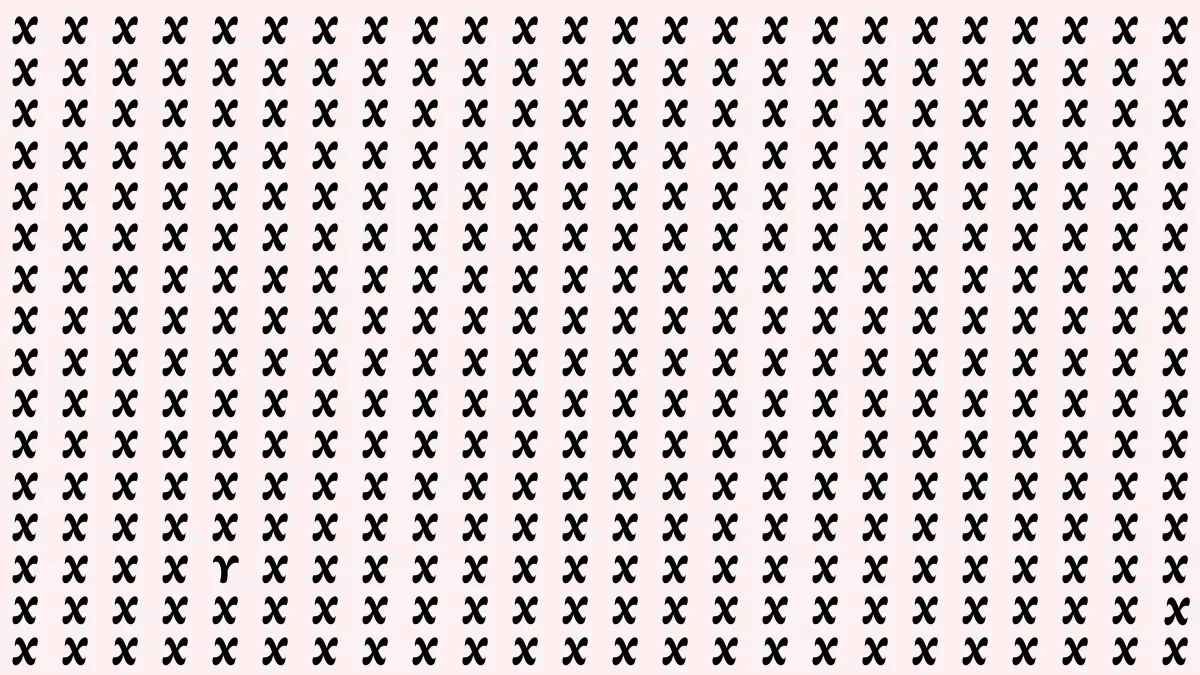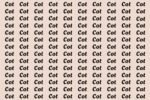Optical illusion IQ tests have become increasingly popular as a way to measure a person’s cognitive abilities. These tests are designed to challenge our perception, forcing us to look beyond the surface and see things in a new way. One of the most common types of these puzzles involves finding a hidden letter or shape within a pattern of similar shapes. One such test asks participants to “Spot the Hidden Y Among Xs.” While it may sound simple at first, these puzzles can be surprisingly tricky and require a combination of attention to detail, concentration, and sometimes, a little bit of strategy to solve. If you’ve ever struggled with these types of illusions, don’t worry you’re not alone. In this article, we’ll walk you through how to approach and successfully tackle these optical illusion IQ tests.
Understanding the Nature of Optical Illusions
Optical illusions are visual phenomena that deceive or mislead the brain into perceiving something differently from how it truly is. In a typical “Spot the Hidden Y Among Xs” test, you are presented with a grid or cluster of Xs arranged in a seemingly random pattern. Somewhere in this array, there is a Y that blends in so well with the Xs that it can be very difficult to spot. These illusions often exploit the way our brains process visual information, tricking us into overlooking details or assuming the pattern follows a predictable sequence.
The goal of these puzzles is not just to find the hidden letter, but to tap into how your brain processes patterns and objects. This is why the test is so popular in IQ assessments it provides insight into how well you can identify and process visual data in a fast and efficient manner.
Step-by-Step Guide to Spotting the Hidden Y
Before you dive into the puzzle, it’s essential to have a strategy. The method you use to search for the Y can make a big difference in how quickly you can solve the puzzle.
Observe the Overall Pattern
Start by scanning the grid as a whole. Don’t rush into the search just yet. Take a moment to familiarize yourself with the layout. Optical illusions often rely on how our brains categorize and segment information. By first observing the full pattern, you can gain insight into the general arrangement of shapes. This step also helps in identifying areas that may look different from the rest, helping you narrow down where the Y might be.
Focus on the Borders and Corners
Many optical illusions hide objects near the edges or corners of the pattern. It’s easy for our eyes to focus on the center of the image, where we assume the most important information is located. However, this is often where our brain is tricked. So, it’s worth checking out the boundaries of the grid and paying attention to any subtle deviations in the arrangement of Xs.
Look for Variations in Shape or Orientation
In many cases, the hidden Y will not only be a different letter but may also be positioned differently compared to the surrounding Xs. This could mean that the Y is rotated, flipped, or positioned in a less conventional way. Our brains are conditioned to look for symmetry and regularity, so an asymmetrical shape like the Y might be harder to notice at first glance. Train your eyes to spot even the smallest variations in angles or lines.
Consider the Color and Contrast
Although many optical illusions use black and white patterns, some may involve subtle variations in shades or color. In these cases, the Y might be differentiated by a slight difference in tone, color intensity, or brightness. While this might not be the case in every puzzle, it’s always good to be aware of any visual cues that could set the Y apart from the Xs.
Scan in Small Sections
A useful technique is to break down the grid into smaller sections and scan each section individually. This method allows you to focus on one part of the puzzle at a time, instead of becoming overwhelmed by the whole grid. As you work your way through the sections, you may notice patterns or oddities that were missed when viewing the puzzle as a whole.
Work Slowly and Methodically
One of the biggest mistakes people make when trying to spot the hidden Y is rushing through the process. Our brains are naturally quick to make assumptions based on what we expect to see, and this can lead to overlooking important details. Instead of quickly scanning the image, take your time and go over it methodically. Move from one part of the puzzle to the next, and be sure to examine every section closely.
Take Breaks If Necessary
If you’ve been staring at the grid for a while and still haven’t found the Y, it’s okay to take a break. Sometimes, stepping away for a few minutes can help reset your brain and improve your focus. Optical illusions can be tiring on the eyes, especially when you’re trying to spot something hidden within a complex pattern. After a short break, return to the puzzle with a fresh perspective.
Why Are These Puzzles So Challenging?
The difficulty of optical illusion puzzles like “Spot the Hidden Y Among Xs” often stems from how our brains process visual stimuli. Our brains are wired to look for patterns and make quick judgments based on past experiences. When faced with a new pattern or an unusual arrangement, our brains may overlook critical details or jump to conclusions about what we are seeing.
Additionally, our eyes tend to focus on the most obvious elements of an image, making it difficult to spot subtle differences. This is why it can be so challenging to identify something that is intentionally camouflaged or blended in with the rest of the image. Our brain can be easily fooled, especially when it’s confronted with an optical illusion that disrupts the usual rules of visual processing.
The Cognitive Benefits of Solving Optical Illusion IQ Tests
Despite their tricky nature, optical illusion IQ tests offer several cognitive benefits. By regularly challenging yourself to spot hidden objects or letters within patterns, you can improve your visual attention, pattern recognition skills, and overall cognitive processing. These tests force your brain to think critically and adapt to new ways of interpreting visual data.
In addition, successfully solving optical illusions can help build confidence in your problem-solving abilities. It’s a fun and engaging way to exercise your brain, and the satisfaction of finding the hidden Y after a careful search is immensely rewarding. These tests also promote patience and persistence, qualities that can be beneficial not just in puzzle-solving, but in many aspects of life.
Final Thoughts
While the “Spot the Hidden Y Among Xs” optical illusion IQ test might seem simple at first, it’s actually a great way to test and improve your cognitive abilities. The key to solving it lies in a combination of focused attention, strategic scanning, and patience. By following the steps outlined above and practicing regularly, you’ll sharpen your ability to spot hidden details and improve your visual perception skills. Remember, the goal is not just to find the Y, but to train your brain to see beyond the obvious and unlock new ways of thinking. Happy puzzling!




